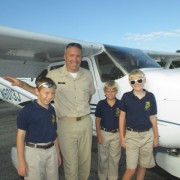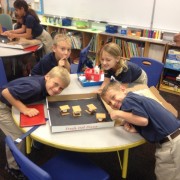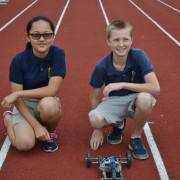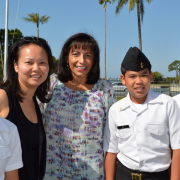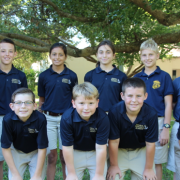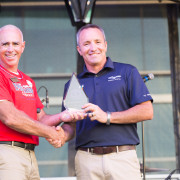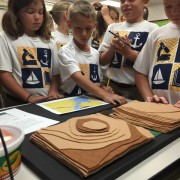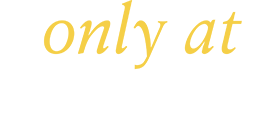At Farragut, our students don’t just excel, they soar!
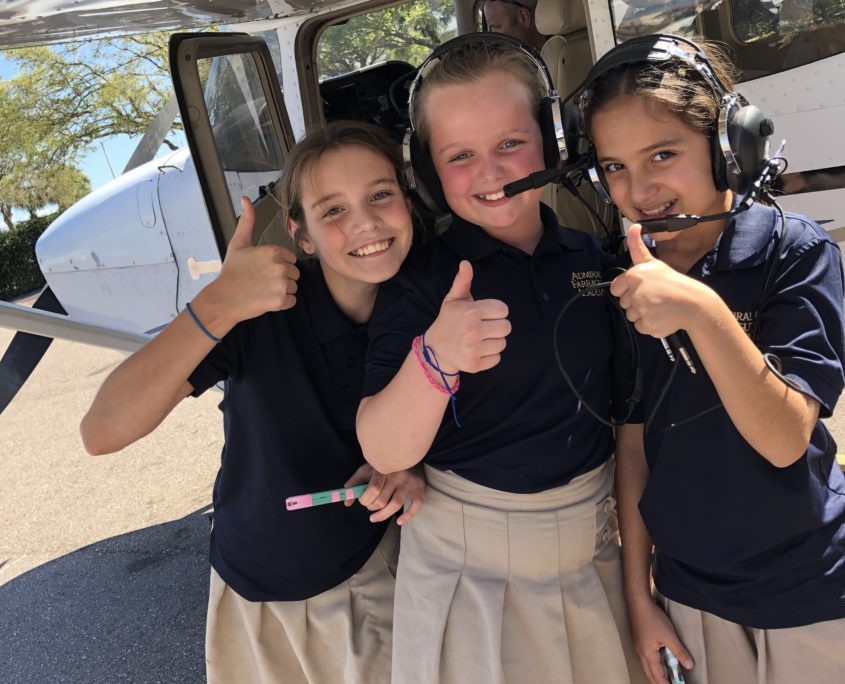
Students as young as 9 have been learning to fly at Admiral Farragut Academy, where 2018-19 was a year of groundbreaking advances for the school’s Aviation Program.
Besides opening the program to Lower School students, Aviation acquired a state-of-the-art flight simulator, launched a new Upper School curriculum, and brought in a 700-pound jet engine. It’s a powerful combination, sure to increase interest in aviation.
The timing couldn’t be better; the aviation industry is scrambling to find future pilots. Boeing projects a global demand of 790,000 pilots through 2028. What better way to inspire aviation dreams than letting children — after simulator training, of course — fly a plane?
“By exposing the Lower School students to aviation early in their academic journey, we hope to foster a love of learning that will carry through to our Upper School program and beyond,” said Aviation Program Director Rob Ewing.
The Lower School program was made possible by a one-time $5,000 grant that American Airlines awarded to Farragut and 16 other aviation-focused schools. Farragut is hoping for a renewal in order to keep the program going.
Sixth-grader Hazel Alevok was among the 58 third- through seventh-grade students who participated in spring 2019.
“At first I was nervous,” Hazel told local TV news station BayNews9, “and I thought it was going to be like the simulator, but it was actually a lot easier than I thought.”
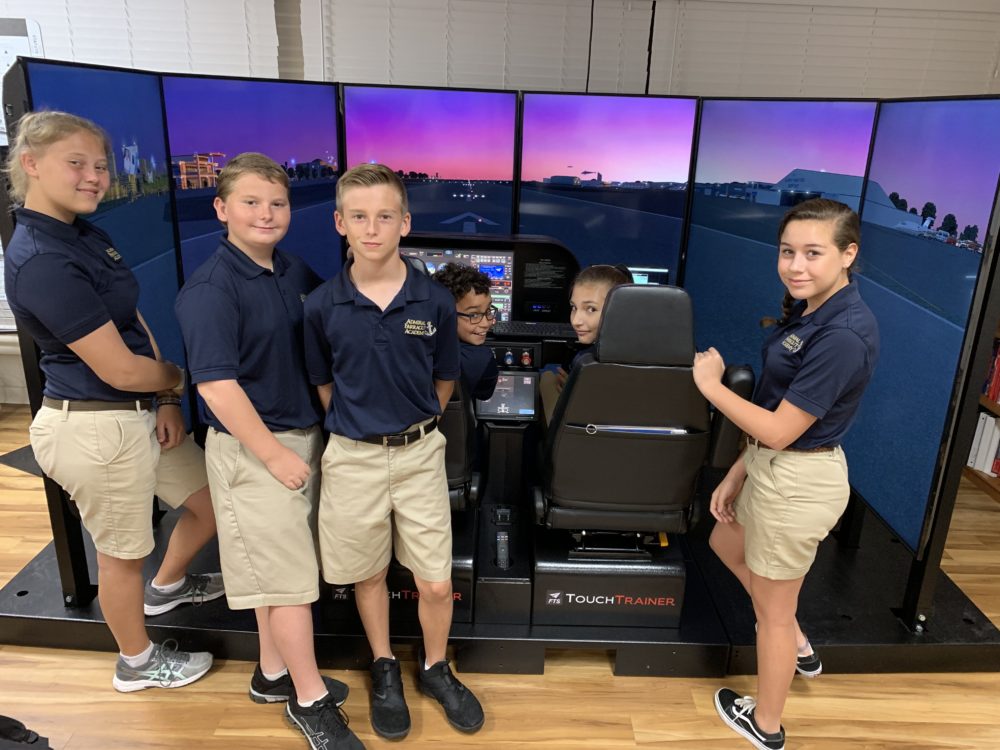
That simulator Hazel and other students trained with has a 200-degree wraparound feature, allowing the eyes to sense depth in landing. Farragut purchased the simulator — it’s technically an AATD (Advanced Aircraft Training Device) — with proceeds from the sale of a donated Cirrus SR22 G2 Turbo aircraft.
From FlyThisSim, the AATD allows Upper School students to get 2.5 hours of logged simulated instrument time to meet the FAA requirements for private pilot certification. Students also use it to log 20 hours toward their instrument rating. It replicates 45 different aircraft configurations from such companies as Cessna, Piper, and Diamond, Ewing said.
The Aviation Program innovations don’t end there.
Also new in 2018-19 was a first-of-its-kind aviation STEM curriculum developed and released by the Aircraft Owners and Pilots Associations (AOPA) at no cost to participating schools. It will grow yearly until all four high school grade levels of curriculum are complete.
“With an unprecedented demand for careers in aviation, we are thrilled that so many high schools are utilizing our STEM curriculum to inspire students and give them the skills to pursue future careers in aerospace,” said AOPA President and CEO Mark Baker. “Planting the seeds for the future workforce of our industry is part of AOPA’s mission to keep aviation vibrant.”
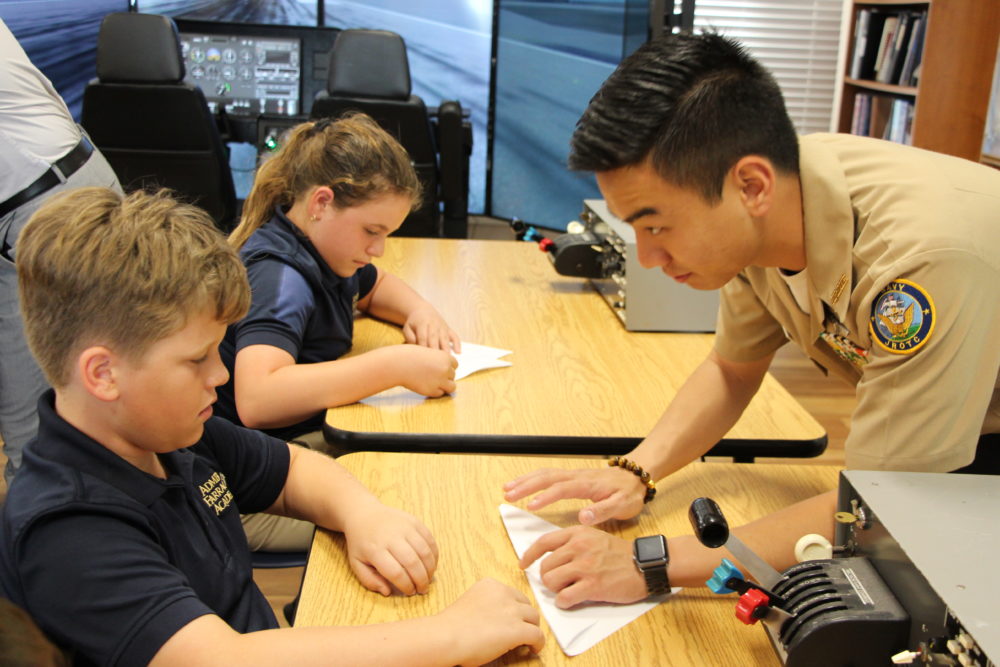
But there’s more.
Embry-Riddle Aeronautical University, through which Farragut aviation students can take dual-enrollment classes, donated a 700-pound Lycoming engine designed for helicopters and fixed-wing aircraft.
“It’s a great demonstration engine,” said Aviation Instructor Jose Hercher, adding that someday interested students may learn to disassemble and reassemble it — terrific experience for aspiring mechanical engineers.
Whether hoping for aviation-related careers or just interested in the joy of soaring, Farragut students have unique opportunities found at few schools — for the youngers students especially.
“It’s exciting and rewarding to see people do something for the first time,” Ewing said. “They can’t drive a car, but are at the controls of these airplanes.”
Seventh-grader Sophia Raymer summed it up: “It was amazing.”
Support the Aviation Program by donating at www.farragut.org/giving. Funds may be used for purchasing project supplies, new simulator products and equipment, room renovations, and more.

